When Sony announced the development of the Sony FE 35mm f/1.4 last year at Photokina, I was surprised at first because it was the third 35mm lens on the roadmap for a system that was less than one year old at the time. At the Cologne show Mr. Yasuyuki Nagata (General Manager – Lens and Peripheral Business) explained that this lens was in fact highly requested. Users wanted a 35mm with the best possible performance, which put Sony in a difficult position because CSC users also deeply care about the size of their kit. And the size of this new fast prime lens can’t be ignored.
This dilemma ultimately leads us to the following question:
Is the performance of the Distagon 35mm f/1.4 good enough to make you forget about the size?


Sony Distagon T* FE 35mm F1.4 ZA Main Specs
- Focal length: 35mm
- Maximum aperture: 1.4
- Minimum aperture: 16
- Number of aperture blades: 9 circular aperture
- Angle of view: 63°
- Closest focusing distance: 30cm
- Lens configuration: 12 elements / 8 groups
- Special elements: a AA element, 2 Aspherical elements
- Lens surface coating: yes (T Coating)
- Maximum image magnification: 0.18x
- Optical Image Stabilizer: No
- Dimensions: φ78.5 Ø, 112 mm
- Filter diamater: 72mm
- Weight: 630g
Table of Contents
Below is a quick hands-on video about the lens that also shows you image and video samples. Read further for a more in-depth analysis and image samples.
Build quality and ease of use
The Distagon 35mm shares the same strong build as many of the other Sony FE lenses. It has an all-metal surface and is dust and moisture resistant. The lens hood is made of plastic with a metal ring on the external surface. The focus ring is really large which makes it easy to operate in all conditions. It is a focus-by-wire type but very precise when I used it for both stills and video. The downside with video however is that you have to turn it a lot to switch from infinity to the shortest focus distances.
The most interesting characteristic is the presence of an aperture ring with 1/3 markings. It is very precise and smooth to use and has the convenience of a de-click option via the dedicated switch on the side. This feature will certainly be appreciated by filmmakers.
I wish that every Sony lens could have an aperture ring. It is so nice to use.
As you can see from the images, it is a big lens. We are definitely in DSLR territory here. Actually, if I compare its size with the equivalent offerings from DSLR systems, the Distagon is the longest and heaviest out of the five (excluding the Sigma Art in terms of the weight):
- Sony 35mm f/1.4 G (A-mount): 69mm x 76mm, 510g
- Canon 35mm f/1.4 L USM: 79mm x 86mm, 580g
- Nikkor 35mm f/1.4 G: 83mm x 89.5mm, 600g
- Sigma Art 35mm f/1.4: 77mm x 94mm, 665g
Is this bad or good? Well, I don’t want to crucify this lens for its size but it is certainly controversial because most brands (including Sony) are pushing mirrorless cameras for their compactness. I am not an engineer but I can certainly understand that designing a compact full-frame lens with great performance and autofocus must be challenging. Actually this is exactly what Mr. Nagata explained to us. In a quote from his interview, he states:
“It’s a big issue. Customers request three things: performance (including sharp corners and no vignetting, distortion and chromatic aberration). They really care about size and weight. Certainly they really care about the price. It’s really difficult for us to create lenses by combining these three aspects.” – Mr. Yasuyuki Nagata (General Manager – Lens and Peripheral Business)
So I guess that the FE lens line-up could split into two distinct categories in the future: the small and compact lenses on one hand (like the FE 35mm f/2.8) and the bigger, more expensive lenses on the other (like the one I am reviewing here). Customers will have more choice but at the same time, more to sacrifice if they place performance first. And that’s just the prime lenses. I wonder what the reaction would be if Sony decided to develop f/2.8 constant aperture zooms for the E-mount system in the future.
But back to this Distagon. If we put specs aside, I admit that it isn’t that heavy to carry around and it handles quite well with the A7s. With the A7 Mark II, it is certainly better. So now we know that it is big, let’s now turn to how great this lens is.
Through the lens: image quality
Given the size and the price (around $1600) you would expect top quality and while the Sony Zeiss 35mm 1.4 doesn’t fail, it is not perfect. Colour rendering is great and gives the same results as the other Sony ZA lenses. But let’s start from the performance at the fastest aperture, since it is the main reason you’d be interested in this lens in the first place. The good news is that at f/1.4 the lens is really sharp. The bokeh can be really creamy and pleasant and the minimum focus distance of 30cm can be of help as well. You can definitely detect Zeiss quality here.
Full frame and f/1.4 also means having the option of isolating your subject with a shallow depth of field even when you don’t focus at the closest distance. The Distagon offers good performance here as well and can generate a nice 3D feel but it also depends on the type of background and how far off it is.
At f/1.4 there is vignetting but it can be easily removed in Lightroom, especially with the new version (CC/6) because it includes the lens profile. You can also find traces of chromatic aberration but in total honesty I didn’t find it too invasive at least on the A7s. Some users have reported this issue but I don’t find it very annoying. The only picture I have where it is clearly noticeable is the one below but it is silly to shoot such a frame at 1.4 if not to highlight CA. With Lightroom or other software, it can be removed or at least reduced.


At the smaller apertures, the lens delivers sharp results across the entire frame, both at the centre and in the corners. It’s a great performer overall in terms of sharpness with excellent micro contrast. There is no doubt that this is its best characteristic. I could have appreciated the sharpness even more on the A7 or A7r but unfortunately I could only test this lens on the A7s. But there is no reason to suspect that the lens couldn’t handle higher resolutions.
The lens includes the Zeiss T* coating to reduce flare. Overall the lens handles backlight and direct sun well but it isn’t perfect. Ghost flares can be present like in some of the examples below. Fortunately it is nothing really dramatic but it can leave a trace of imperfection on your composition.
There is some slight barrel distortion that the camera won’t correct perfectly. However I don’t see this as a major problem because Lightroom 6 will automatically correct the distortion since it has the lens profile.
Autofocus and performance
The autofocus is not the lens’ best characteristic, at least in my findings. The first day the AF performed poorly with my A7s. However I made the mistake of not checking for firmware updates right away. Sometimes you can’t help but get excited about testing new gear and you just want to go out which, in my case, was also due to my limited time with the lens. So on the second day I updated my A7s with the latest firmware version 1.20 which improves the use of the camera with the latest FE lenses including the 35mm. Yes, the AF was a little bit better but there is still a constant back and forth movement when focusing even in good light conditions. Sometimes it was less annoying, sometimes it took the camera almost 2 seconds to focus. I believe that the performance should be better on the A7/A7 mark II because they include phase detection AF but it is also true that my A7s performs better with the 55mm f/1.8. For video, I couldn’t test the lens’ autofocus that much but judging from the few shots I took, it wasn’t bad. You can see an example with the squirrel shot in the video at minute 3:54 (beginning of this article).

One thing that I find a little bit disappointing about this lens is the lack of optical stabilisation. Considering that it is bigger than most 35mm DSLR lenses on the market, I would have been more accepting of the size had the lens also been stabilised. This means that right now you’ll have stabilisation only if you use the A7 Mark II with this lens. But considering that it is also nice to use for video, it would have been great to have this option on the other A7 cameras as well. After all, the A7s is the most natural choice for video out of the FE series.
Conclusion
The Sony FE 35mm f/1.4 is a nice lens that delivers the kind of results you would expect. At the same time, it is not perfect from an image quality point of view (CA, some distortion) and to be honest it is not one of those lenses you fall in love with right from the start. Its size certainly doesn’t help but even if you consider its overall performance, it is really good but not stunning.
Personally, I would never buy it mainly due to the size issue. I would prefer the 35mm f/2.8 or even better the Loxia 2/35, as it would suit my needs just fine. The FE 35mm 1.4 is a professional lens that can deliver great results in the right hands and can be of great use for various assignments where having a fast lens is key. I can see it doing well for reportage, events, weddings, astro-phototography and video use. But it is not for everyone, especially those who have left a DSLR system for a smaller and more compact alternative.
 What I like about the Sony Distagon T FE 35mm F1.4 ZA:
What I like about the Sony Distagon T FE 35mm F1.4 ZA:
- Great sharpness at f/1.4
- Sharp from corner to corner at the smallest apertures
- Nice bokeh
- The aperture ring is really nice to use
 What I don’t like about the Sony Distagon T FE 35mm F1.4 ZA:
What I don’t like about the Sony Distagon T FE 35mm F1.4 ZA:
- It is a big lens, even slightly larger than most DSLR equivalents
- Lack of optical stabilisation
- Autofocus is a little bit slow with the A7s
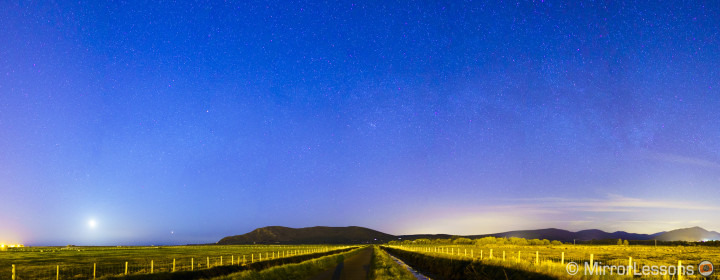
What are your thoughts about the 35mm f/1.4? Is it a lens you’d add to your collection? Share your thoughts below!
This lens was rented from the amazing people at HireaCamera.


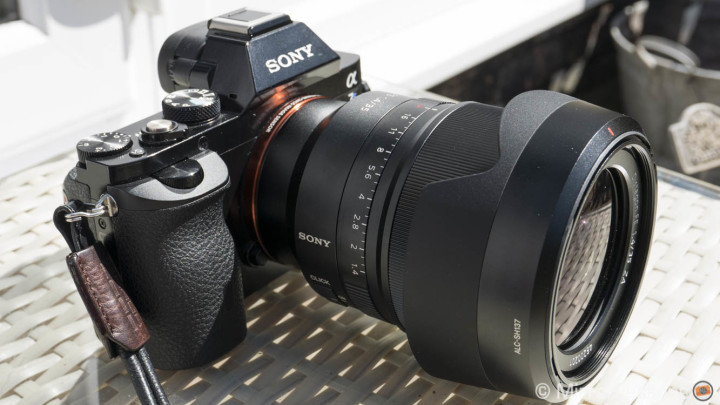







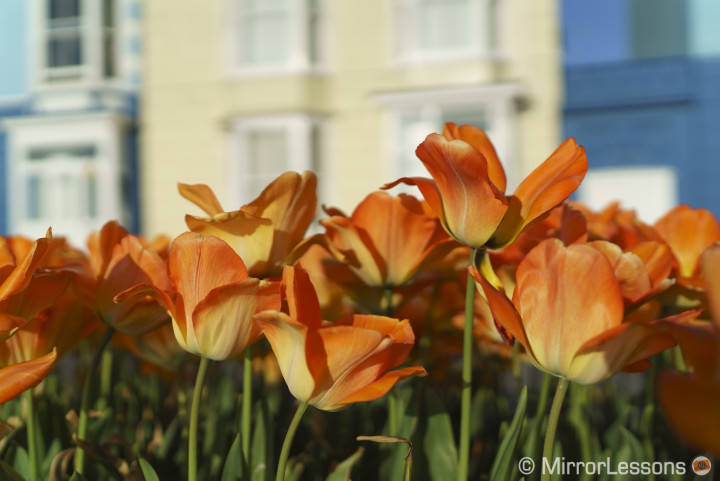


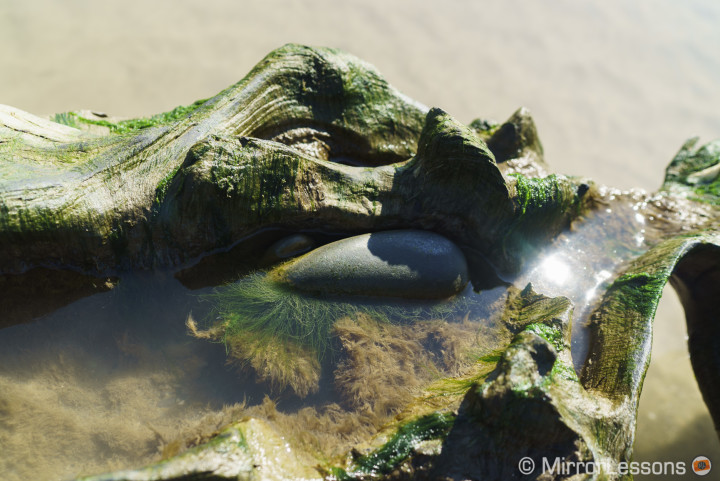










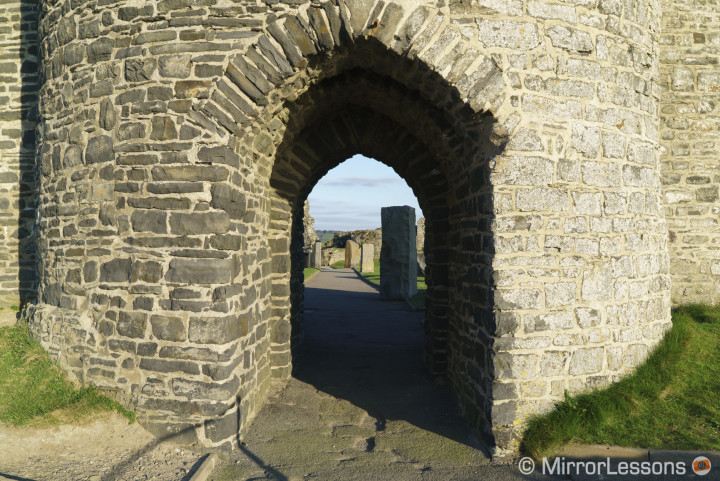






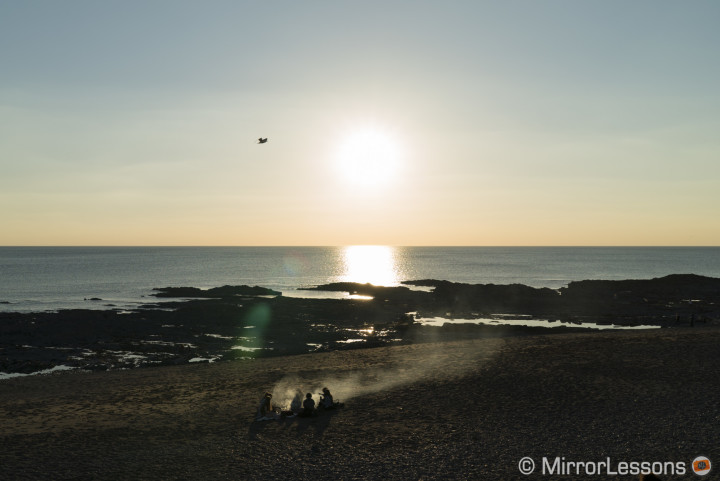






I think Sony designed the FE mount wrong. I do have problem to pay enormous price and there is no guarantee the lens will hold its value.
I think that the FE 35mm 1.4 has more 3d pop. As for the focus shift, I admit I always choose my aperture first so I haven’t noticed it with the Loxia.
Good review, as usual! What lens has more 3d pop in your opinion at f/2? One problem on the loxia could be the focus shift, so you have to focus wide open then stop down to meter. Do you confirm this I read in another review?
When the first A7/A7r came out I remember saying that Sony could built an excellent system with small lenses like the 35 and 55mm that first came out. I agree that a set of f/2 primes would be perfect. That’s why I like the Loxia lenses and I admit that the lack of AF doesn’t bother me too much personally. I understand however that they might not suit everyone’s needs.
“It’s a big issue. Customers request three things: performance (including sharp corners and no vignetting, distortion and chromatic aberration). They really care about size and weight. Certainly they really care about the price. It’s really difficult for us to create lenses by combining these three aspects.” – Mr. Yasuyuki Nagata (General Manager – Lens and Peripheral Business)
1) don’t really care about corner sharpness in an f1.4 lens, after all at 1.4 the corners are going to be out of focus anyway, would prefer a smaller lens with less sharp corners
2) vignetting, CA and distortion are correctable in software, would prefer a smaller lens and more aberations
“So I guess that the FE lens line-up could split into two distinct categories in the future: the small and compact lenses on one hand (like the FE 35mm f/2.8) and the bigger, more expensive lenses on the other (like the one I am reviewing here).”
all I really want are f2 lenses, not a huge 1.4 or a tiny 2.8, I want a nice compact f2, with af, and cheaper than a loxia- at this moment I don’t know if i’m more drawn to the 28mm f2, or to abandon the idea of af with sony and continue to use voigtlander lenses and invest in a fuji xt1 and 23mm lens for af work
Jom,
You have me there. Lumix does not have a 35mm F/1.4 but they do have a 15mm (x2 for MFT) F/1.7. That being the case we can’t compare apples to apples exactly but 1.7 to 1.4 is pretty close and the Lumix/Leica Summilux 15mm F/1.7 is incredibly small. About the diameter of a silver dollar and maybe 1.5 inches deep. The Sony weighs in at 1.39 lb (630 g) where the Lumix is 4.06 oz (115 g). The Sony lens is an absolute monster, 6X’s the size and weight of the Lumix, and even in the review they mention it’s actually larger than other companies, Nikon Canon, equivalent lenses. So I stick with my theory that Sony is doing the same old thing, building large bulky lenses when most of the photographers I know are wanting desperately to go smaller and lighter.
The Lumix 12-35mm is 2 stops slower than the FF competition – if you can call it comptetition. There isn’t really any valid comparison to be made. The 12-35mm costs far less because it cannot perform to the same level as the FF equivalents in either DOF or ISO terms.
Which lens combo are you referring to with the GH4? What equivalent lens does it have compared to the FE 35/1.4?
You are comparing the size of micro 4:3 with ff lenses!! Come on, I understand you do like your system, but..really? Loxia lenses are superb tiny FF lenses, and still ,if you need something smaller you can get SonyZ fe 35 2.8, and that includes AF too
If I wanted to buy a 35mm lens for my A7s, I would pick the Loxia. I really liked it when I tested it last year.
We have compact Loxia 35/2 with MF, don’t We?
I am sure that Sony designed the lens for 36 or even higher megapixels. I wouldn’t worry too much. Also, you can test vignetting, CA or distortion even on a lower mp sensor. I rent or buy all the Sony gear I test for this website. Sometimes I have to accept “compromises” 🙂
That was then. With 36mp cameras and soon to be larger. This is today.
Well because the A7s is the camera I own. I won’t buy an A7r just to test a lens. Do you think that 12mp is not enough? I wonder how other testers did back in the days where 12mp was the highest mp you could get 🙂
Lens size is one thing, but you now need to add the relevant bodies to those lenses. An A7 / FE 35 f1.4 combo will be smaller and lighter than a 5D MkIII with either the Canon or Sigma options attached, for example.
Mischa’s comment was perfectly accurate.
If you are testing optical quality, why are you testing this lens on a 12mp camera? OK it’s large, we can see that.
This example is off, in my opinion, as both lenses will give you different pictures. The f-stop is the same, but the aperture diameter letting in more light is twice as large with the FF lenses. You will get different S/N ratio and DOF. Choose a 24-70/4, and it is smaller already, a 24-85/3.5-4.5 and you are down to 465g (Oly 12-40 is 382g), so 80g more. There is no 24-70/5.6 lens to provide the same DOF, AOV and S/N ratio on FF, however (of course you need to increase ISO on FF, but this is discussed plenty of times before). Equivalent lenses will be of similar size and weight (still, the smaller sensor will give you a slight, negligible for me, advantage in size and weight). Expensive? Sony is definitely, but m43, too. A 75mm or 42.5/1.2 getting me into regions of DOF and IQ I prefer are not cheap either. a 12-35 or 35-100 2.8 is too expensive for what it delivers in terms of subject separation for _me_, too. It is as always, everybody defines the sweet spot of a system to be different. For some it is m43, for others FF, which is totally fine in my opinion.
Mishca, Ok, so lets do one more comparison of a lens that I use all the time for my work. Lets take the Sony 24-70mm F/2.8, the Canon 24-mm F/2.8, Nikon 24-70mm F/2.8 and the Lumix equivalent 12-35mm F/2.8. Here are the weight and price specs from the BandH Photo web site:
Sony 24-70mm F/2.8 = 3.55 lbs. Price =$1898.00
Canon 24-70mm F/2.8= 2.66 lbs Price =$1899.00
Nikon 24-70mm F/2.8 = 3.55 lbs Price =$1886.00
Panasonic Lumix 12-35mm F/2.8 = 1.15 lbs Price = $997.00
This is just one more example of a Full Frame lens being much, much heavier and almost $1000.00US more expensive. In the world of making pictures and getting paid to do so, there aren’t many clients left that will pay the kind of money it takes to buy lenses that are this expensive. Not to mention the freedom from weight the Lumix system gives you. A full frame camera requires full frame lenses which equal lots of weight and lots of cost. Times are changing in the economics of photography. Most people don’t even have the desire to carry a camera even as small as a Lumix GH4. Most people are carrying iPhones. The MFT group, which includes Lumix, is the only category of cameras that have hit the sweet spot for image quality, size and weight and relatively affordable cost. Sony is doing nothing more than following the old school of building cameras just like Nikon and Canon. I like their mirrorless body but their lenses are just the same old thing. Heavy and costly.
Ok, when we take THIS lens you are right, but not if we are speaking about the complete lens line-up. Most lenses are incredibly small and lightweight. When I compare my kit to that of my friends Canon 5DMIII that difference becomes VERY obvious
Mischa, I agree it’s great to have options and I also agree the low light capabilities of the Sony is superior to anything in the MFT lineup. However, your comment that it’s, “simply not true that Sony keeps the same size and weight as traditional DSLR’s” is not accurate. Even in the post the author has a chart showing the different lenses with size and weight. I’ve attached a screen shot of the graph. He also states, “As you can see from the images, it is a big lens. We are definitely in DSLR territory here. Actually, if I compare its size with the equivalent offerings from DSLR systems, the Distagon is the longest and heaviest out of the five (excluding the Sigma Art in terms of the weight):” A problem with full size sensors is the need for full sized lenses. The benefit of a full seize sensor is great low light capabilities. Just depends on what you want or need. Me I’m thrilled with the quality I’m getting from Lumix MFT system that is far smaller, lighter and much less costly. But as you say, to each their own. Options are good.
Of course MFT can be somewhat smaller due the tiny sensor size, but you can have a very small and lightweight full frame package with auto-focus too. I choose this any day of the week because I like to have those low light capability that MFT just can’t provide. But it’s a good thing we can all have our own preferences. Some people even prefer manual focus lenses. There is something for everyone. But it’s simply not true that Sony keeps the same size and weight as traditional DSLR’s in their sense line-up.
Loxia lenses are NOT small compared to anything in the Micro Four Thirds world in the same range and aperture. Not to mention, with Lumix lenses you get the benefit of modern AF and Image Stabilization. Unlike the Loxia where you are relegated back to the stone age with no AF and No IS. Not are what there is to like about that.
The great thing with the Sony mirrorless system is you can have BOTH. Small system with small lenses if you want to go lightweight (FE 35 2.8, Loxia’s, FE 55 1.8) and for certain events when you don’t mind the bigger lens you have those larger quality options too. And of course you can adapt almost every existing lens. What’s not to like?
Canon already made the smaller / more compact lenses… The Canon FD series even have focus scales, depth of field marking and operational f/stops… they are a marvelous match for general photography….no auto focus??? I have always set the distance on the camera scale and they rocked into precise focus with assistance of the micro prism… Sony’s focus aid is even better….. and with no auto-focus searching all the body/lens combinations are lighting fast. Glad I did not toss my perfectly good ‘old’ lenses from the FD… years.
Once again, I’m not a fan of going backwards which is what I feel I would be doing to use expensive manual focus lenses like the new Zeiss options. I’m guessing they have great glass but still much larger than LUMIX equivalent lenses and no auto focus. Not exciting in the least.
Daniel J. Cox
http://www.naturalexposures.com
You can’t beat the compactness and portability of micro four thirds. This is why I think it is the best mirrorless system right now. I think that Sony is struggling a little bit with this. That’s why the Zeiss loxia series could be the best solution (as long as you like manual focus).
I just can’t get excited about a mirrorless system that has a somewhat smaller body than the traditional DSLR’s but keeps the same lens form factor in weight and size. Once Nikon and Canon decide to wake up Sony will be just another also ran. What made me switch to mirrorless technology was the small size and weight of the Panasonic LUMIX system. I must admit I would love the extra quality that a full frame gives, but I don’t have a burning need for that quality at the expense of size and weight. Eventually, the smaller Micro Four Thirds sensors will give us the quality of today’s full frame sensors and that will solve the problem completely. Yes, of course by that time full frame sensors will also have moved ahead in even better quality but at what point do we decide it’s enough? I’m doing 24×36 inch prints with MFT already and yet I do very few of those. Most uses are magazine reproduction, calendars, internet, etc. Sony has built an interesting camera but when I pickup one of their lenses it reminds me of the Nikon gear sitting in my equipment closet.
Daniel J. Cox
http://www.naturalexposures.com
I used the Summilux on the original A7 one year ago. Can beat the IQ of that lens really 🙂
Yikes! When purchase the 7II, I’ll be usng my 35mm Summilux with the Voight adapter. The size of this lens must be 4-5 times larger than the Lux. Granted the Leica lens is MF, but I think the size advantage is of greater benefiit than the lack of AF. I’m getting away from Canon to reduce stress on my joints! I also constantly use the depth-of-field scales on my lenses, something that fewer and fewer new lenses possess. Thanks for a good review!
Thanks Mark. I can’t wait to try the two Batis lenses 🙂
No way. I went Sony a7r full frame for street form factor. To be frank the IQ of the 35mm 2.8 is terrific and though I love fast glass, I need the form factor. I will be interested to read your review of the 85mm 1.8 Zeiss Batis this coming summer. The mid tele range with a 475g weight might be a sweeter tool. Keep up the good work–Mathieu